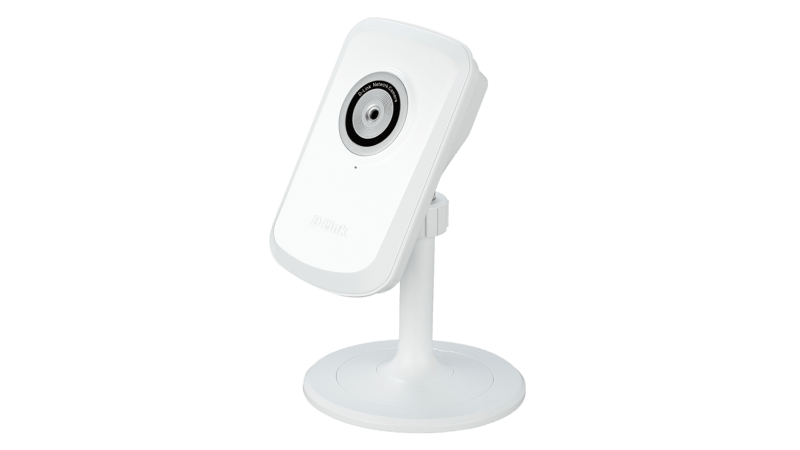
What Are Sticky Proxies
Random Vs Sticky Ports – ProxyRack Support
When you visit your product dashboard you will see that you have the option to select from either Random or Sticky Sessions when using your Mixed Rotating Datacenter proxies.
Random Port
When you are using the Random proxy port each connection you make generates a unique IP address (exit node) on each request you make to the server. For example you open a webpage with an IP, but if you do any further action like reload the page or click a link the IP will already have changed.
Using the Random port is valuable if you are doing things like, scraping thousands of pages or doing web data collection but this might not suit your needs. For example you might need to access one website for an extended period and don’t want to lose your connection.
In this case what we recommend is that you choose an IP from the Sticky Sessions and then set a rotating time limit.
Sticky Sessions
Sticky proxy ports keep the same IP for a longer period of time: up to 30 mins for your datacenter IPs.
The countdown starts with the first request that you send
The a session will be terminated after 30 minutes (if 30 mins is set) after the first initial request
Once a session gets terminated – you will receive a new sticky IP and same rules apply again
For best results we recommend that you select 10 MINUTES (but it will really depend on what your are doing).
Set Rotating Sticky Session Interval
You can set your rotating interval to one of the default options of 3 up to 30 minutes, however you also have the option to customise this (up to a max of 30)
You can set how long your Sticky Session will rotate by adding the parameter refreshSeconds or refreshMinutes to your username.
Want to watch a video walkthrough instead? This YouTube video will walk you through setting the rotation interval:
Username
username-refreshMinutes-5 username-refreshSeconds-30
FireFox Example
cURL Example
curl -x -U username-refreshMinutes-5
Releasing a Sticky Session
If you would like to remove the assigned proxy from your sticky session you can do this by executing a request through your sticky port by visiting
Sticky Session Information
If you want to view more information about the IP that has been assigned to your sticky session and also some of your relevant account details visit
Troubleshooting – Sticky Sessions are not working
There are a few reasons or things to consider if you are trying to use Sticky Session ports and they are not connecting (so they aren’t working! )
A) You may be trying to connect too much bandwidth.
This might happen as an example if you are trying to connect your proxies to your Mac OS (so the entire device/computer) rather than just say connecting to your Firefox browser.

E-Commerce Scraping: Static vs Rotating Proxies – Oxylabs
Planning and launching a scraping operation is not an easy task. Learning what is a bot, choosing, configuring them, and avoiding getting blocked are just a few pieces of the puzzle. One of the most important decisions you will have to make is choosing a type of proxy.
There are a lot of nuances when deciding between different proxy types, and one of the more important ones is knowing the differences between static vs rotating proxies. Once you do, you will be able to make an informed decision and go with a proxy that suits your business needs and goals.
What is a static proxy?
A static proxy allows accessing the web from a single unique IP address. A static proxy is (in most cases) a datacenter IP that gets assigned to you. You can continue to use the static IP address you got assigned as long as you need to. The other common name for a static IP address is a sticky IP address.
With static IPs, you will still be able to reap the benefits of using a proxy. You will enjoy high speed and good bandwidth while maintaining online anonymity. However, with static proxies, you will have to build a certain logic that rotates proxies to avoid IP bans.
While most static proxies are datacenter IPs, and residential proxies are always rotating, there are some exceptions. For example, static residential proxies, or datacenter proxies with a proxy rotator feature, so it is important to find out exactly what type of proxies you need for your case.
What is a rotating proxy?
Unlike a static proxy which assigns one sticky IP, the rotating proxy provides you access to an entire pool of IP addresses. Rotating proxies interchange at either fixed or random intervals. For example, the IP address can change with every request you make, or every few minutes.
Rotating proxies provide you with an additional level of security and anonymity as the requests you send to servers originate from different IP addresses, often from unrelatable geo-locations.
Proxy rotator
Do not confuse rotating proxies with a proxy rotator. Proxy rotator is a software solution that rotates otherwise static proxies for you. The software assigns IP addresses automatically and enables you to choose cooldown times between IP changes. This tool is a useful addition to datacenter proxies. We have published a blog post that explains how to use the proxy rotator.
Scraping and e-commerce industry: the close ties
What does scraping, static and rotating proxies have to do with e-commerce? If you are in the e-commerce waters yourself, you probably know that the competition is becoming harsher every passing day. At the same time, markets are becoming saturated, consumers are becoming more price-sensitive, and search engines play a vital role in product research.
Today, more than ever, businesses in the e-commerce industry need to get their hands on as much data as possible. This goes beyond making data-driven business decisions and also has a lot to do with business growth, market penetration, and sustainability.
Product information pages contain a lot of valuable information. The price and product description text only scratch the surface. For instance, scraping product descriptions can help you pick up the keywords the competition is using to rank at the top of search engine result pages (SERPs). User review monitoring can help you understand the target customers’ pain points, and price monitoring help you follow prices in the market.
Manually gathering data from product pages is time-consuming, not to mention the number of errors that are pretty common in repetitive tasks. More importantly, information on product pages constantly changes, including prices, discounts, and sales. Generally, you are unable to detect these changes and identify patterns if you do it manually.
Data scraping comes as the best answer to all your competition research needs. It is ultra-fast because it is carried out by bots. You get all the information you need in real-time without breaking a sweat because the process is completely automated. The data is well structured so you can immediately spot trends, patterns, and find specific information.
Since we have established the link between scraping and e-commerce, let’s see why sticky proxy vs rotating proxy comparison is relevant here.
Static or rotating proxies for product information scraping
Big players in the e-commerce industry are well aware their competitors are going to scrape their websites. They are most likely doing it themselves, too. However, scraper bots can ruin the customer experience. They can generate a lot of traffic in a short time. This amount of traffic and requests sent to the server can slow down an e-commerce website or even bring it down.
As a result, many e-commerce websites implement anti-scraping technologies. These technologies enable servers to spot suspicious user behavior and request headers. Telling bots from users is easy today. Frequent requests and high quantity of requests from a single IP address is one of the main signs. This is where the static vs rotating proxies comparison becomes relevant.
Given the fact that you are performing a large scale scraping operation because the number of product pages is substantial, getting blocked is the most probable, if not imminent, scenario.
To sum up, this particular use case requires either a large number of static proxies, or rotating proxies. Some targets require you to keep the same IP address for a specific time, and others may require a frequent proxy rotation. However, if you are not sure how likely you are to get blocked by the target website, or if you do not know how many static proxies you would need to gather the required information, then rotating proxies are a better choice.
Conclusion
You have learned the main differences between static and rotating proxies, and which one to choose if you are gathering product information from e-commerce sites.
If you are about to launch a large-scale web scraping project and are wondering whether to use static or rotating proxies, the answer depends on your target site. But if you do not have enough information about the target site, and how likely it is to block scraping, then choose rotating proxies.
Since you already know the difference between static and rotating proxies, check out our blog to learn about different IP addresses: ipv4 vs ipv6. And if you are interested in web scraping for e-commerce, check out different data gathering methods for this case.
Gabija Fatenaite is a Product Marketing Manager at Oxylabs. Having grown up on video games and the internet, she grew to find the tech side of things more and more interesting over the years. So if you ever find yourself wanting to learn more about proxies (or video games), feel free to contact her – she’ll be more than happy to answer you.
All information on Oxylabs Blog is provided on an “as is” basis and for informational purposes only. We make no representation and disclaim all liability with respect to your use of any information contained on Oxylabs Blog or any third-party websites that may be linked therein. Before engaging in scraping activities of any kind you should consult your legal advisors and carefully read the particular website’s terms of service or receive a scraping license.

Dynamic vs Sticky – TechExams Community
dynamic learned port security will lose all learned mac address when the switch power cycles because they cant be saved to the startup config. Sticky port security is configured so that you can save the learned address to the startup config. There is also the static method, in which you manually configure mac address access on a switch port and they can be saved as part of the startup config.
So, in a nutshell, plain ol dynamic address will have to be relearned if the switch reboots, sticky can retain the addresses.
Frequently Asked Questions about what are sticky proxies
What are sticky and rotating proxies?
What is a rotating proxy? Unlike a static proxy which assigns one sticky IP, the rotating proxy provides you access to an entire pool of IP addresses. Rotating proxies interchange at either fixed or random intervals. For example, the IP address can change with every request you make, or every few minutes.Dec 17, 2020
What’s the difference between sticky and dynamic proxies?
dynamic learned port security will lose all learned mac address when the switch power cycles because they cant be saved to the startup config. Sticky port security is configured so that you can save the learned address to the startup config.Jun 24, 2005
What does it mean to use proxies?
A proxy server is a computer on the web that redirects your web browsing activity. … When you use a proxy your online requests get rerouted. While using a proxy, your Internet request goes from your computer to your ISP as usual, but then gets sent to the proxy server, and then to the website/destination.


